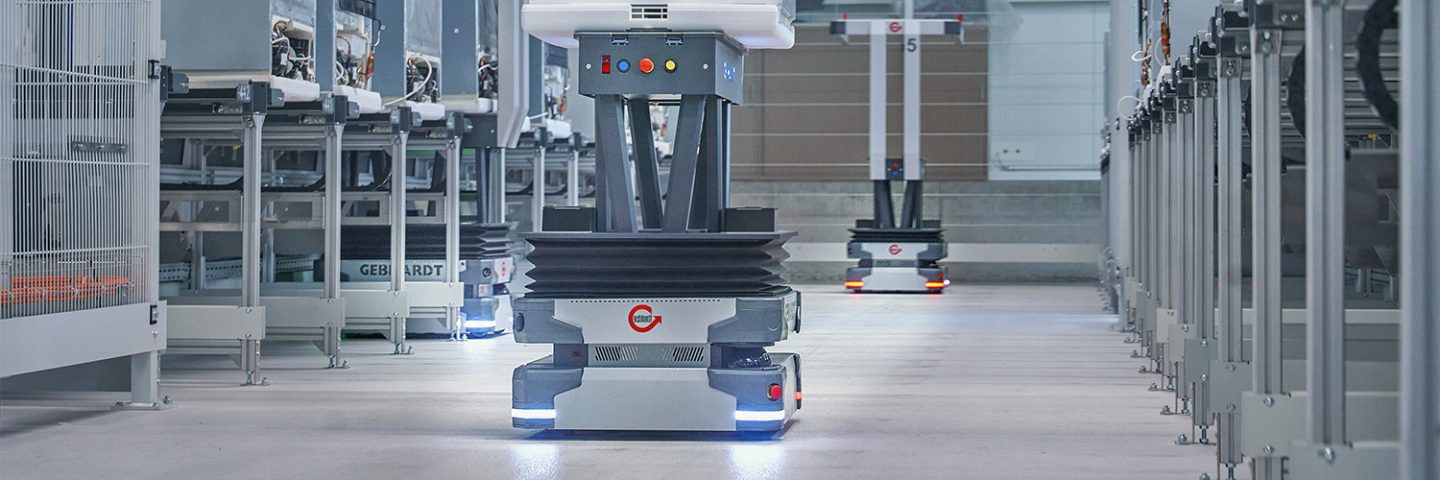
‘Nothing is as constant as change’ – this quote from the Greek philosopher Heraclitus is more relevant than ever in intralogistics today. Global supply chains are changing in ever shorter cycles, markets are becoming more volatile and raw materials are becoming scarcer. At the same time, there is a shortage of skilled workers, while competitive pressure is increasing. As a result, operators of logistics systems must continuously adapt their processes without compromising on efficiency, speed or quality.
‘We have to design intralogistics in such a way that it can adapt to new requirements at any time while remaining efficient,’ says Jan Schlichting, Head of Sales Mobile Robots at GEBHARDT. ‘It’s not about making selective improvements to individual areas; what’s needed is holistic thinking in scalable, modular systems that can be expanded, converted or reconfigured with minimal effort.’
The requirements for technical infrastructure are also changing. Digitalisation, automation and networking are becoming increasingly intertwined. Kai Großkinsky, also responsible for mobile robot sales at GEBHARDT, sums it up as follows: ‘The future belongs to solutions that intelligently combine technology, software and services throughout the entire life cycle.’ This is the only way to control complex material flows and tap into new efficiency potential at the same time. Partnerships such as the one with LAPP, the global market leader for integrated solutions and brand products in the field of cable and connection technology, are crucial for GEBHARDT to achieve these goals.
What is driving intralogistics?
Technological change is leading away from purely stationary systems towards mobile, scalable systems. Autonomous robots, driverless transport systems and intelligent shuttles are taking on more and more tasks in intralogistics. This development is complemented by AI-supported analyses and data-based services, which optimise processes and enable anomalies to be detected at an early stage. It is clear that the need for automation is increasing.
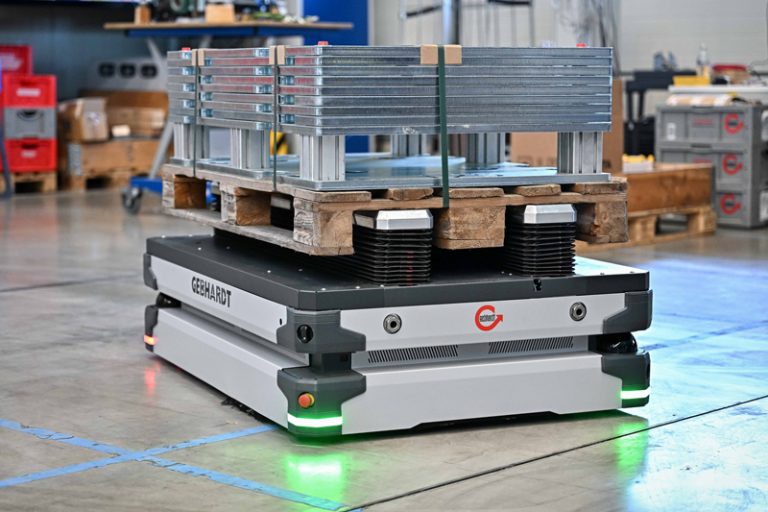
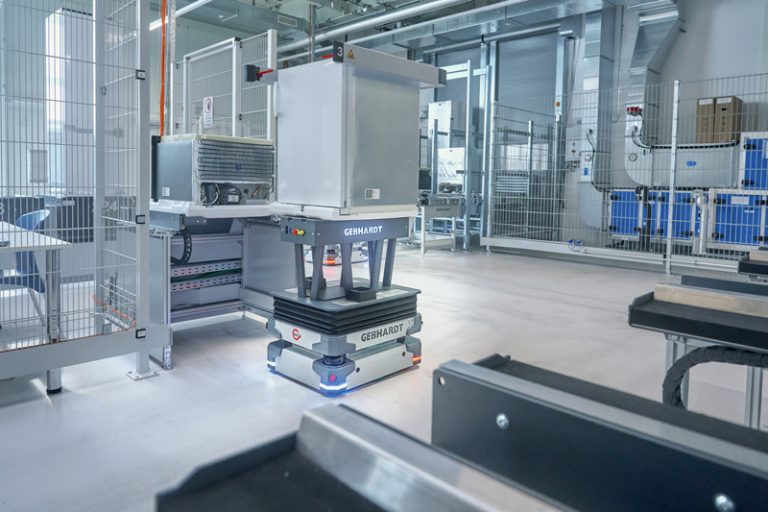
For operators, this results in a clear call to action: investment-intensive systems must function reliably, with utilisation and availability being top priorities. Every unplanned downtime causes additional costs and jeopardises competitiveness because orders cannot be delivered on time. Global networking also poses new challenges: Supply chains must be monitored in real time in order to identify deviations immediately and take proactive measures to counteract them. At the same time, it is important to manage inventory levels precisely. Materials should be available at all times without tying up valuable capital in overfilled warehouses.
Automated systems do more than just increase efficiency. They also reduce physical strain, thereby promoting health in the workplace. All these requirements call for holistic solutions in which hardware, software and service are intelligently integrated and supported by partners who understand the overall system.
System expertise for the smart factory
The new requirements in intralogistics also have an impact on GEBHARDT’s role. Instead of individual machines or partial solutions, customers need complete systems that are precisely tailored to their individual processes and can be expanded. GEBHARDT is therefore continuously evolving from a classic plant manufacturer to a strategic system partner, offering a modular, highly standardised system portfolio that combines consulting, hardware, software and service.
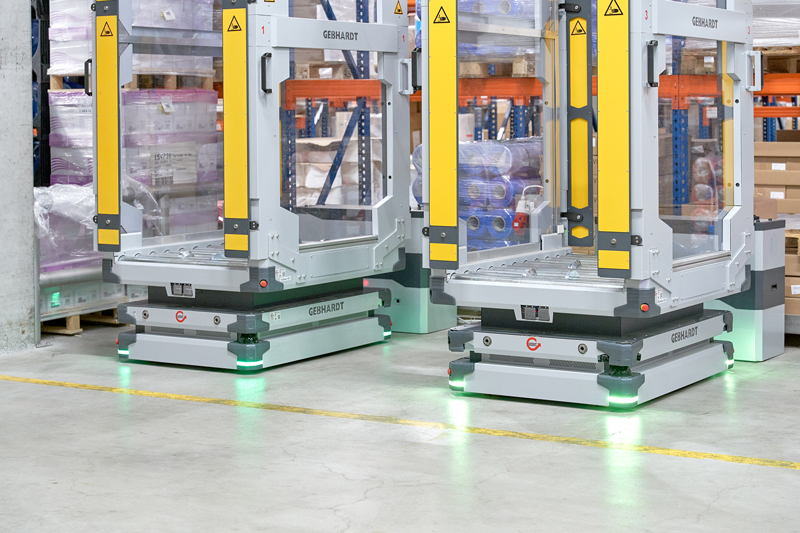
The first step is a precise needs analysis: material flows, warehouse structures and process goals are defined together with the customer and translated into an individual logistics concept. On this basis, scalable system kits are used, which can include shuttle systems, driverless transport systems and even mobile robots. Thanks to the modular design, systems can be flexibly expanded or converted without significantly affecting ongoing operations.
Platform solutions such as ‘GEBHARDT Fusion Flow Control’ intelligently network all system components. The software controls material flows, coordinates the use of equipment and provides real-time data for monitoring and optimisation. This includes a round-the-clock service that ensures remote maintenance, spare parts supply, preventive maintenance and continuous software updates.
However, complex systems do not rely solely on internal know-how; specialised partners also contribute the necessary expertise. GEBHARDT is working with LAPP on pre-assembled, pluggable connection solutions that reduce installation times and minimise sources of error. Technologies such as LAPP’s ETHERLINE® GUARD also help to increase system availability. The device monitors the condition of data lines, enabling predictable maintenance.
GEBHARDT solutions in practical use
How can this be achieved in practice? Various applications from the GEBHARDT portfolio demonstrate how the combination of modular hardware, intelligent software and reliable connection technology works together. The GEBHARDT Omnipallet® pallet shuttle system, for example, enables highly flexible storage and transport of pallets. The shuttles move autonomously in the rack aisles and adapt dynamically to different load units. Thanks to its modular design, the system can be quickly expanded in response to increasing order volumes or changing product ranges.
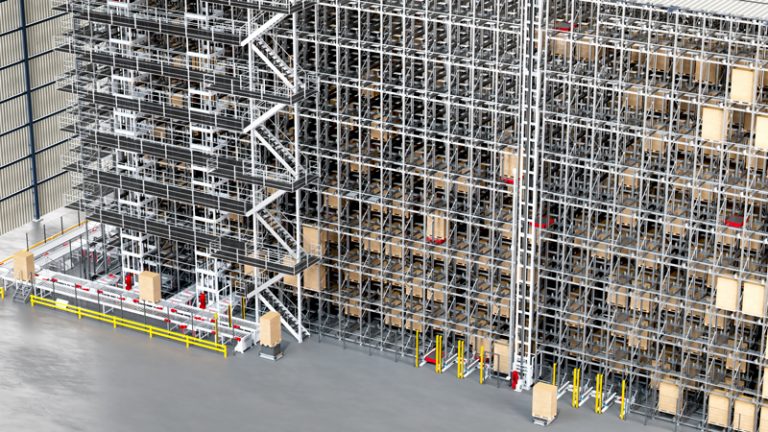
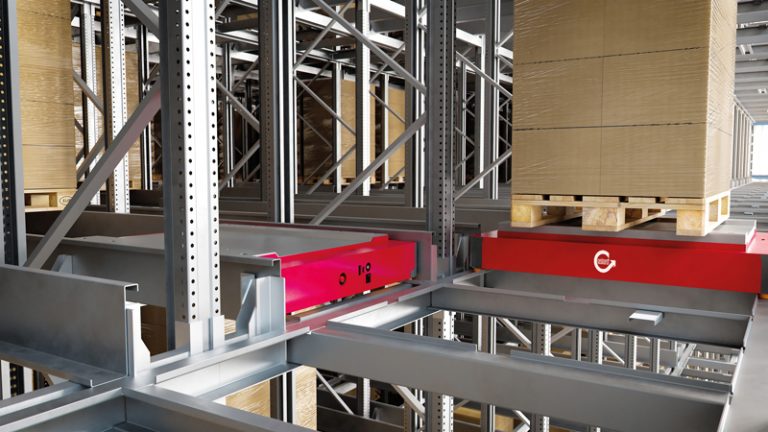
The GEBHARDT KARIS® Type 3 (BF3) also demonstrates how flexible material flows can be designed in practice. The driverless transport system transports goods independently of fixed routes, thus organising the material flow efficiently even in winding warehouse structures. Its compact design makes the KARIS® BF3 manoeuvrable in narrow aisles, and its connection to the control software ensures optimal route planning.
And when projects become even more complex? Then GEBHARDT combines storage and retrieval machines, conveyor technology, sorters and AMRs to form a continuous warehouse ecosystem. All components are networked via uniform interfaces and control systems, so that material flows remain transparent and can be reconfigured at short notice if necessary.
Partnerships as drivers of success
Flexibility, modularity and digitalisation will therefore shape the intralogistics of tomorrow. This makes the ability to seamlessly combine these elements all the more important. For GEBHARDT, this is a high-tech task, but also one that requires partnership. ‘No company can solve the challenges of the coming years alone. It will be crucial to pool knowledge, technologies and resources,’ emphasises Jan Schlichting.
Future-proof systems are created in close cooperation along the entire value chain, with partners such as LAPP. Pre-assembled, standardised connection solutions accelerate implementation, minimise risks and open up new possibilities for intelligent, networked systems.
‘Our goal is to work with our partners to shape the next generation of intralogistics: solutions that not only meet today’s requirements, but also keep pace with future changes,’ says Kai Großkinsky. This creates an ecosystem in which technology, software and service interact throughout the entire life cycle, offering operators maximum availability and investment security.
